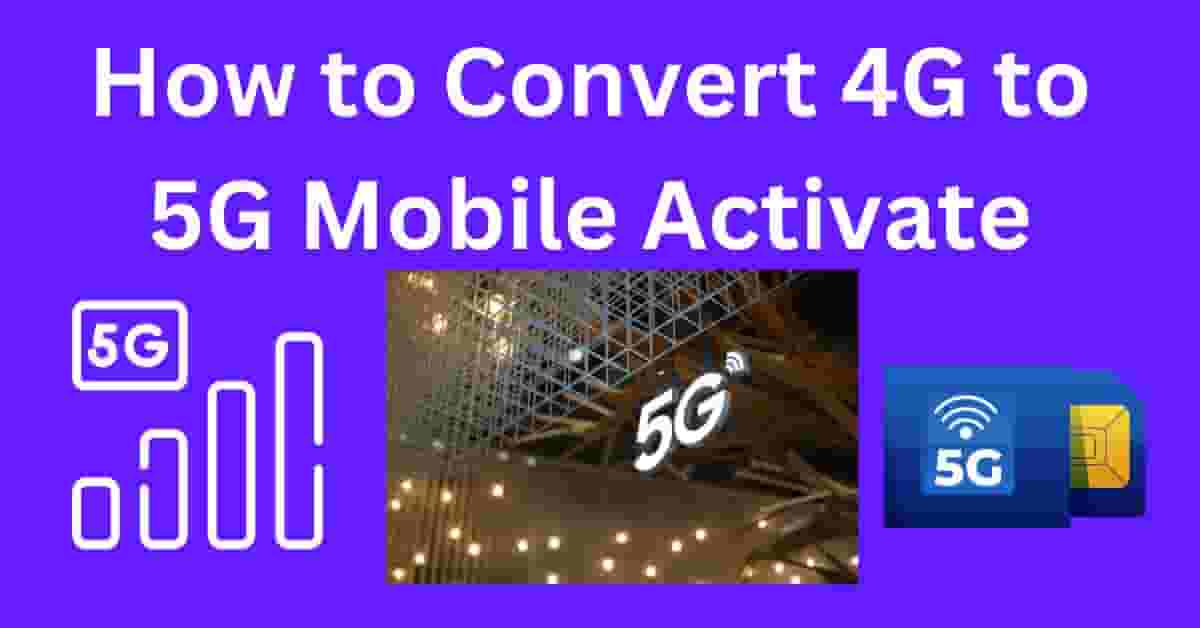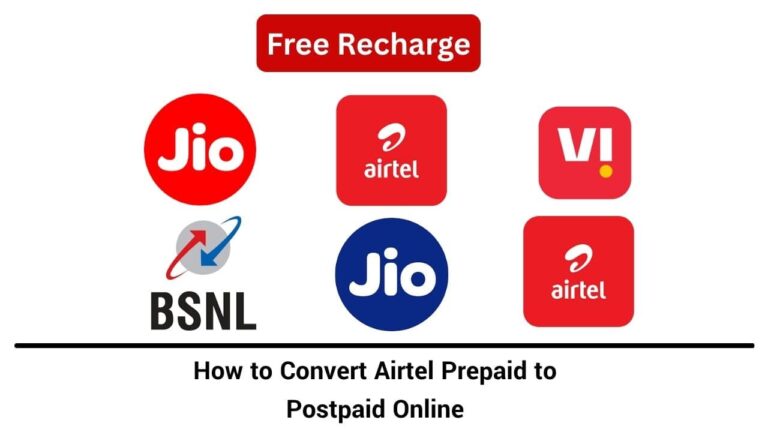The world is buzzing about 5G, and for good reason. This new generation of mobile network technology promises faster speeds, better connectivity, and a whole new level of internet experience. If you’re still using a 4G device, you might be wondering how to make the jump to 5G. This guide will walk you through everything you need to know to convert your 4G mobile to a 5G powerhouse.
Convert 4G to 5G Mobile ActivateTechnologies
Basics of 4G Technology
4G, or fourth-generation wireless, revolutionized our mobile internet experience with faster data transfer rates and improved connectivity. It’s been the backbone of mobile internet for years, supporting streaming, online gaming, and high-speed browsing.
Basics of 5G Technology
5G is the fifth generation of mobile network technology, offering significantly higher speeds, lower latency, and more reliable connections. It’s designed to support the increasing number of connected devices and the growing demand for high-speed internet.
Key Differences Between 4G and 5G
The main differences between 4G and 5G lie in speed, latency, and capacity. 5G offers speeds up to 100 times faster than 4G, significantly lower latency, and the ability to connect more devices simultaneously.
Benefits of Upgrading to 5G
Speed and Performance Improvements
One of the most significant benefits of 5G is its speed. With download speeds reaching up to 10 Gbps, you can download movies, games, and large files in seconds.
Enhanced Connectivity
5G provides a more stable connection, reducing the chances of dropped calls and slow internet speeds even in crowded areas like stadiums and concerts.
Impact on Everyday Activities
From streaming 4K videos without buffering to playing online games with virtually no lag, 5G enhances every aspect of your mobile experience.
It also opens up new possibilities in virtual reality, augmented reality, and IoT applications.
Requirements for Converting 4G to 5G
Compatible Devices
Not all devices can handle 5G. You’ll need a 5G-ready smartphone or device to access the network. Check with your manufacturer or carrier to see if your current phone is compatible.
Network Availability
5G is still rolling out worldwide, so availability varies by location. Ensure that 5G service is available in your area by checking with your mobile carrier.
Updated Software
Your device must have the latest software updates to support 5G. Keeping your phone’s software up to date ensures you get the best performance and security features.
Checking Device Compatibility
Identifying 5G-Ready Devices
To find out if your phone is 5G-ready, check the specifications on the manufacturer’s website or in the phone’s user manual. Look for terms like “5G-enabled” or “5G-capable.”
Upgrading Your Current Device
If your current phone isn’t compatible with 5G, consider upgrading to a newer model that supports the technology. Many manufacturers offer trade-in deals to make this transition more affordable.
Choosing the Right 5G Plan
Comparing Different Plans
Mobile carriers offer various 5G plans, each with different features and pricing. Compare the plans available in your area to find one that fits your needs and budget.
Understanding Data Limits and Speeds
Some 5G plans come with unlimited data, while others have caps. Be aware of these limits and the speeds offered to choose a plan that aligns with your usage habits.
Choosing a Plan That Suits Your Needs
Consider your data usage, whether you’re a heavy streamer, gamer, or casual user, and select a plan that provides enough data and speed without breaking the bank.
Updating Device Software
Importance of Software Updates
Software updates are crucial for ensuring your device can access and efficiently use 5G networks. These updates often include performance enhancements and security patches.
Steps to Update Your Device Software
- Check for Updates: Go to your phone’s settings and look for software updates.
- Download and Install: Follow the prompts to download and install any available updates.
- Restart Your Device: After the update is installed, restart your device to apply the changes.
Enabling 5G on Your Mobile Device
Accessing Network Settings
Navigate to your phone’s settings and look for the “Network & Internet” section. Here, you’ll find options for selecting your preferred network type.
Switching to 5G Mode
Under the network settings, choose 5G as your preferred network mode. This might be labeled as “5G/4G/3G auto” or similar, ensuring your device connects to 5G when available.
Troubleshooting Common Issues
If you encounter issues, such as not connecting to 5G or experiencing slow speeds, try restarting your device, checking for software updates, or contacting your carrier for support.
Maximizing 5G Performance
Optimal Settings for 5G
Ensure your device settings are optimized for 5G use. This includes enabling features like Wi-Fi calling and ensuring you’re in a location with strong 5G coverage.
Tips for Better Connectivity
- Stay in Coverage Areas: 5G signals can be weaker indoors, so stay close to windows or move outside for better connectivity.
- Avoid Interference: Keep your phone away from other electronic devices that might cause interference.
Impact on Battery Life
How 5G Affects Battery Usage
5G can consume more battery than 4G due to the increased data processing. Be prepared for shorter battery life when using 5G extensively.
Tips to Conserve Battery Life
- Use Battery Saver Mode: Activate this feature in your phone’s settings to extend battery life.
- Close Unnecessary Apps: Background apps can drain your battery, so close any apps you’re not using.
- Lower Screen Brightness: Reducing your screen brightness can significantly save battery power.
Security Considerations
Security Enhancements with 5G
5G networks come with improved security features designed to protect your data and privacy. These include better encryption and more secure network protocols.
Staying Safe Online
Even with enhanced security, it’s crucial to stay vigilant. Use strong passwords, avoid suspicious links, and keep your device updated with the latest security patches.
Real-World Applications of 5G
Enhancing Streaming and Gaming
5G’s high speeds and low latency make it perfect for streaming high-definition content and playing online games without lag.
Improving Work and Communication
With 5G, video calls are clearer, file transfers are faster, and remote work becomes more efficient, enhancing overall productivity.
Future Innovations
5G paves the way for innovations like smart cities, autonomous vehicles, and advanced healthcare applications, transforming various aspects of our lives.
Potential Challenges
Coverage Limitations
While 5G is expanding, it’s not yet available everywhere. Rural and remote areas may still lack coverage, impacting accessibility.
Initial Costs
Upgrading to a 5G-compatible device and plan can be costly. However, as the technology becomes more widespread, these costs are expected to decrease.
Compatibility Issues
Some older devices and applications may not be fully compatible with 5G, requiring additional updates or replacements.
Conclusion
Upgrading from 4G to 5G is an exciting step forward, offering numerous benefits like faster speeds, better connectivity, and new possibilities. By following the steps outlined in this guide, you can smoothly transition to 5G and take full advantage of this cutting-edge technology.
FAQs
How do I know if my phone is 5G compatible?
Check the specifications on the manufacturer’s website or in your phone’s user manual. Look for terms like “5G-enabled” or “5G-capable.”
Will 5G drain my battery faster?
Yes, 5G can use more battery than 4G due to increased data processing. Using battery saver mode and optimizing your settings can help conserve battery life.
Is 5G available everywhere?
No, 5G is still being rolled out and may not be available in all areas, especially in rural or remote locations. Check with your carrier for coverage details.
Can I use my current SIM card for 5G?
Most current SIM cards are compatible with 5G, but it’s best to confirm with your carrier to ensure you get the best performance.
What should I do if I experience connectivity issues with 5G?
Try restarting your device, checking for software updates, and ensuring you’re in a strong coverage area. If issues persist, contact your carrier for assistance.




